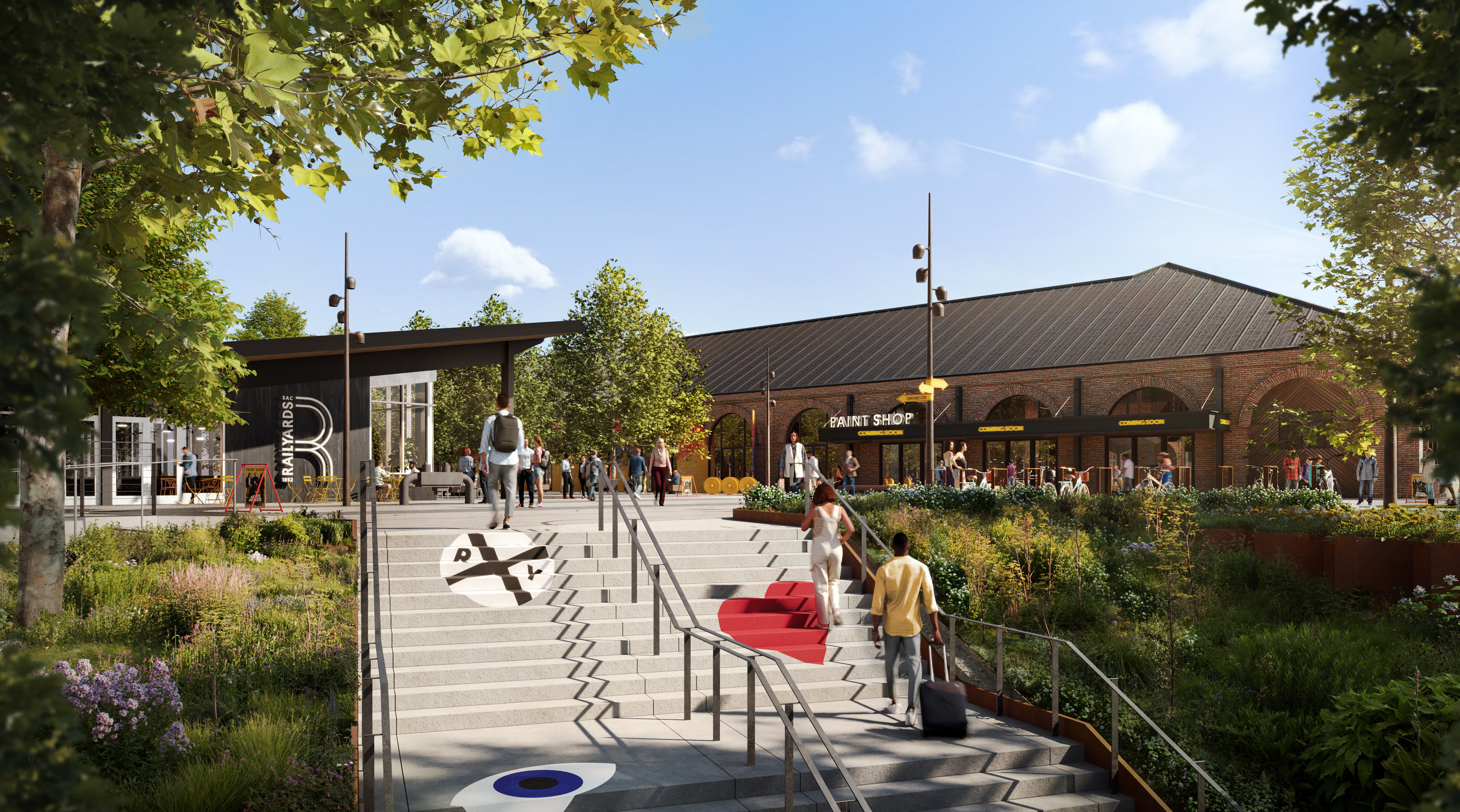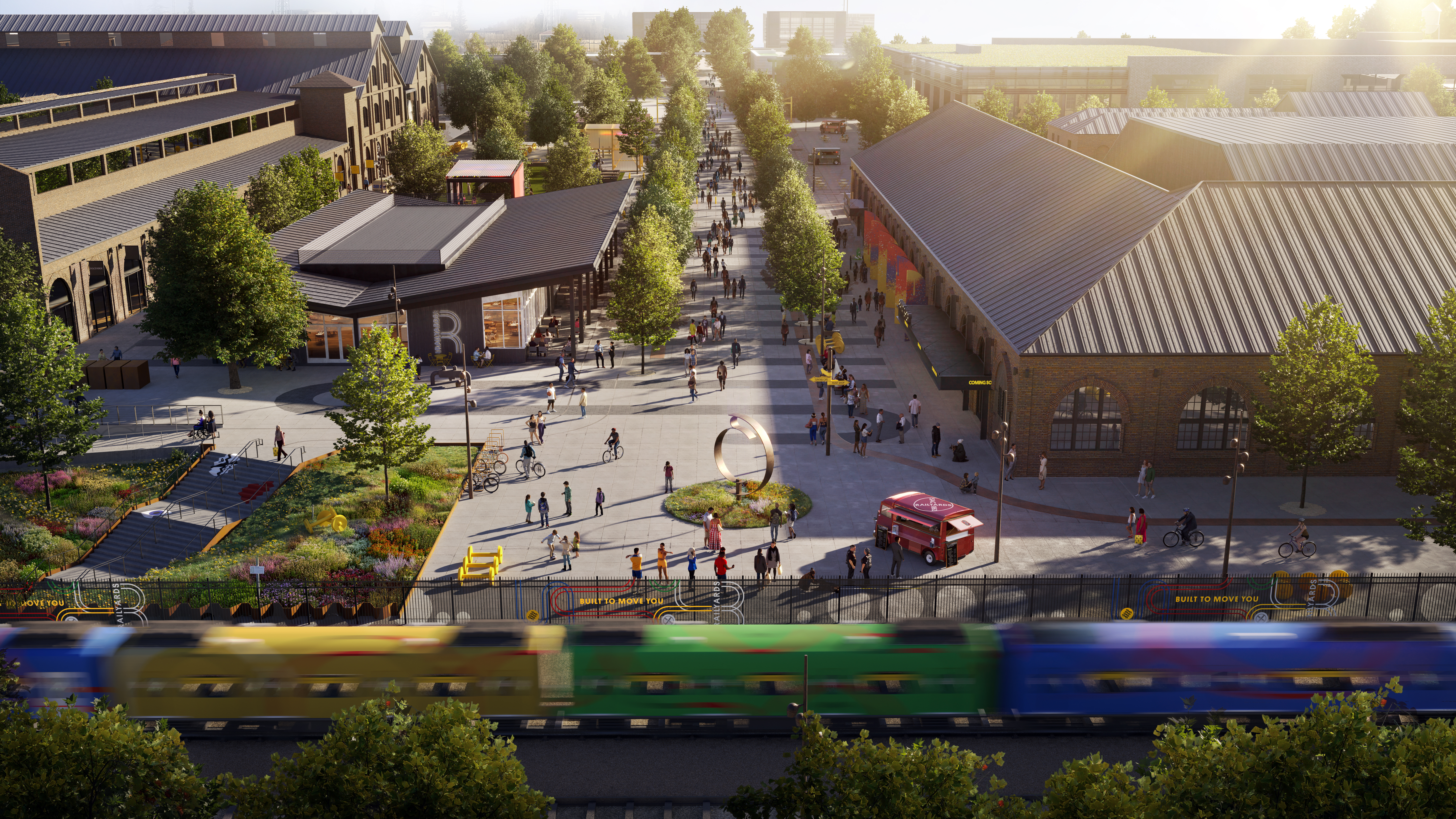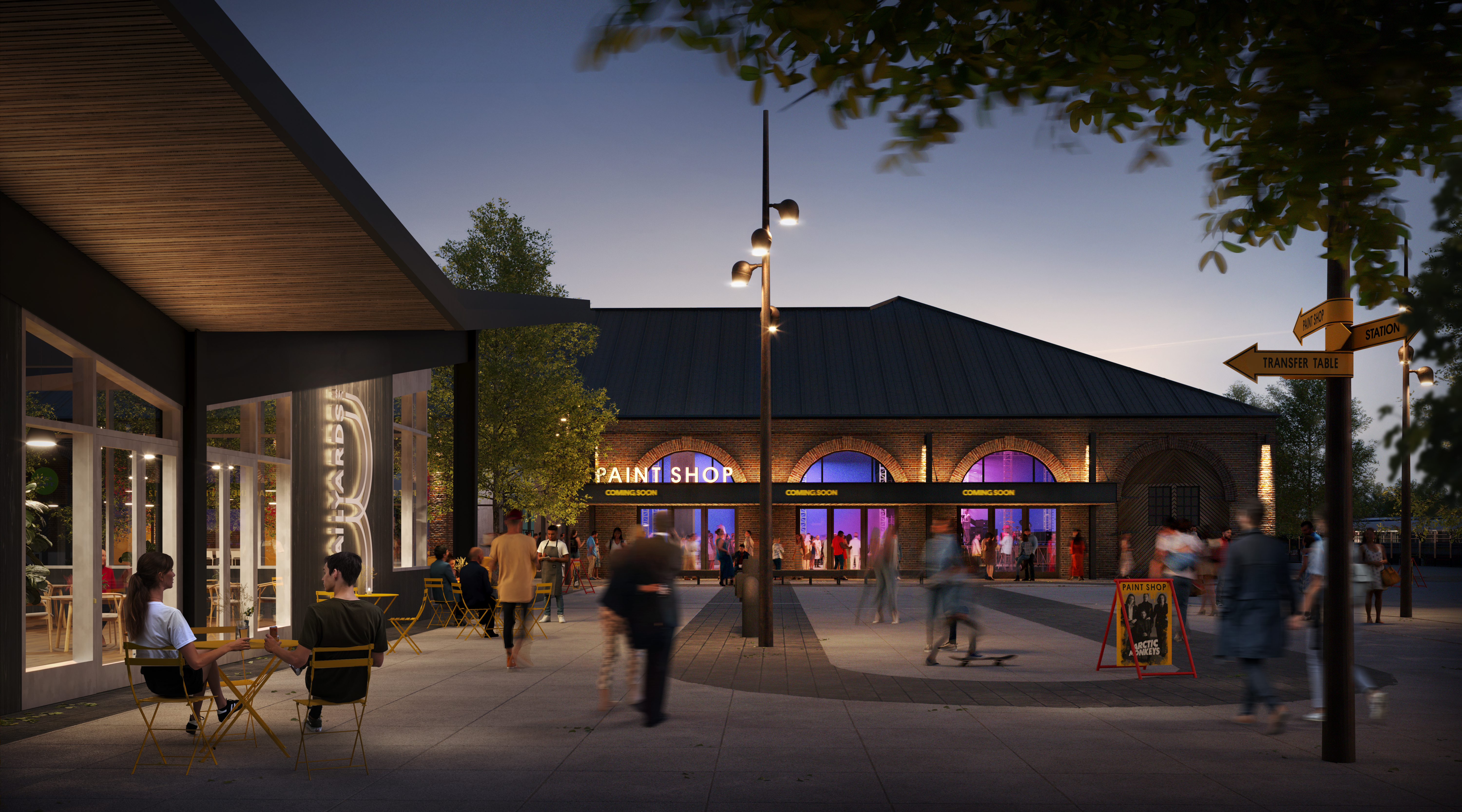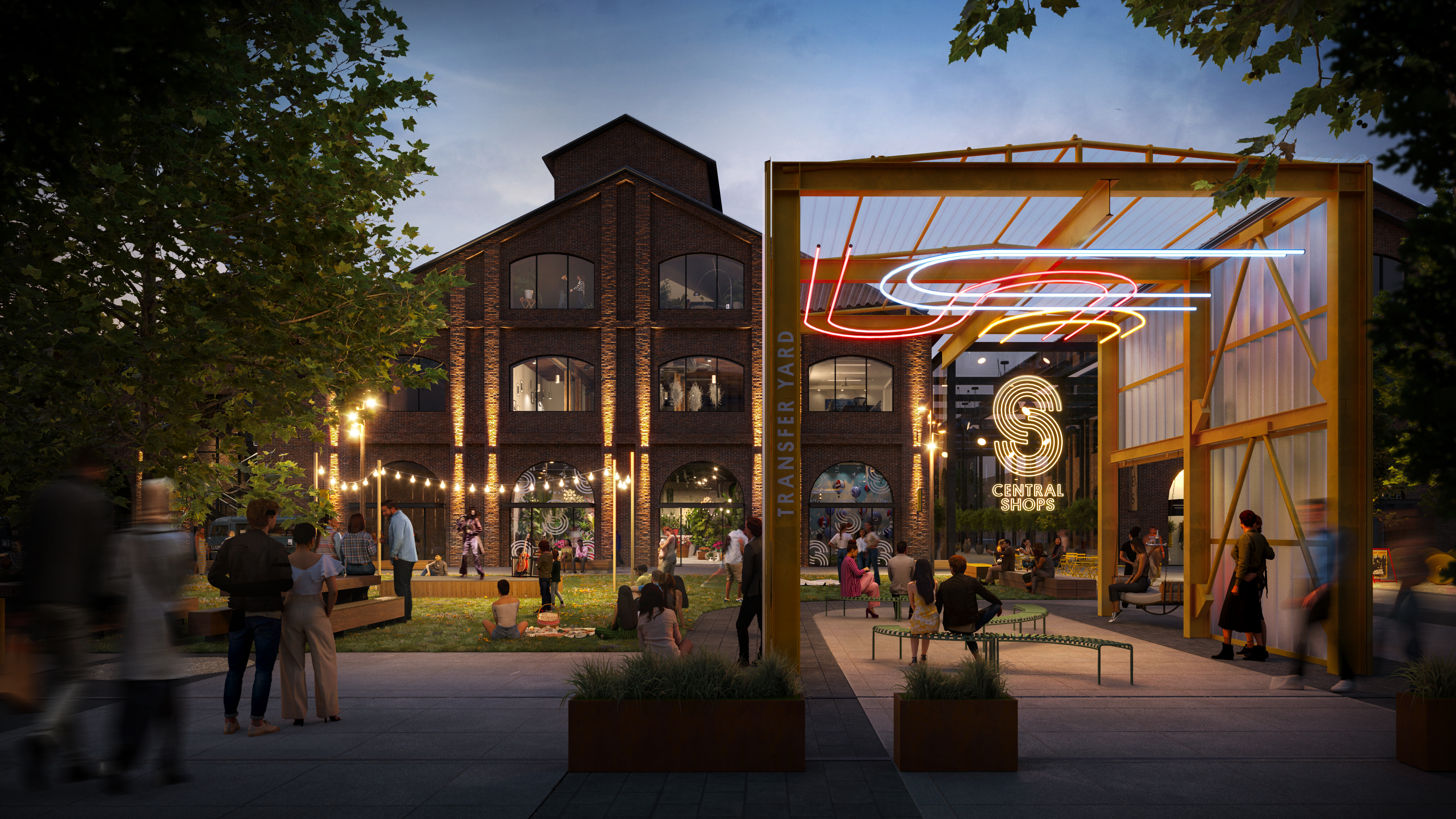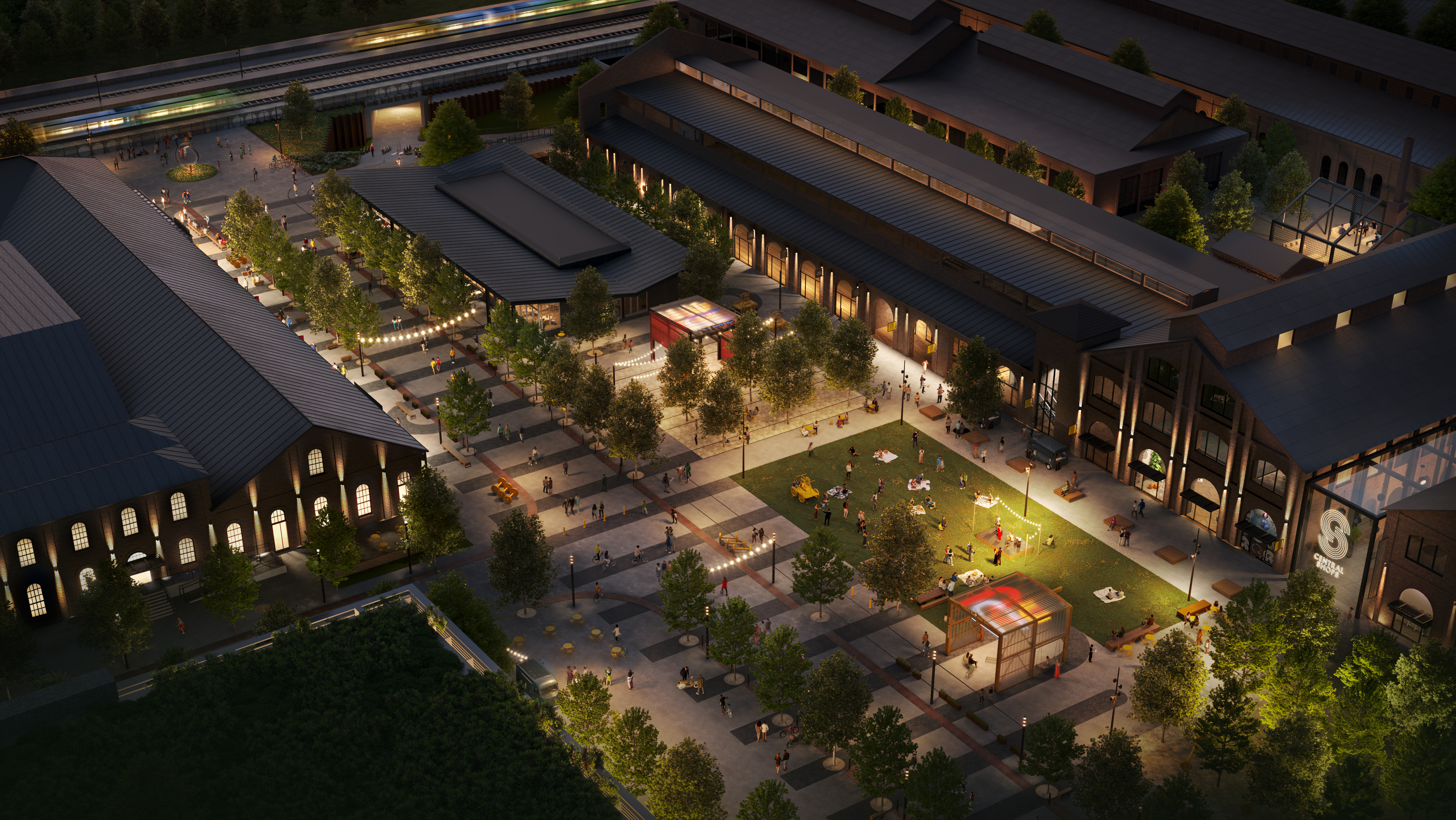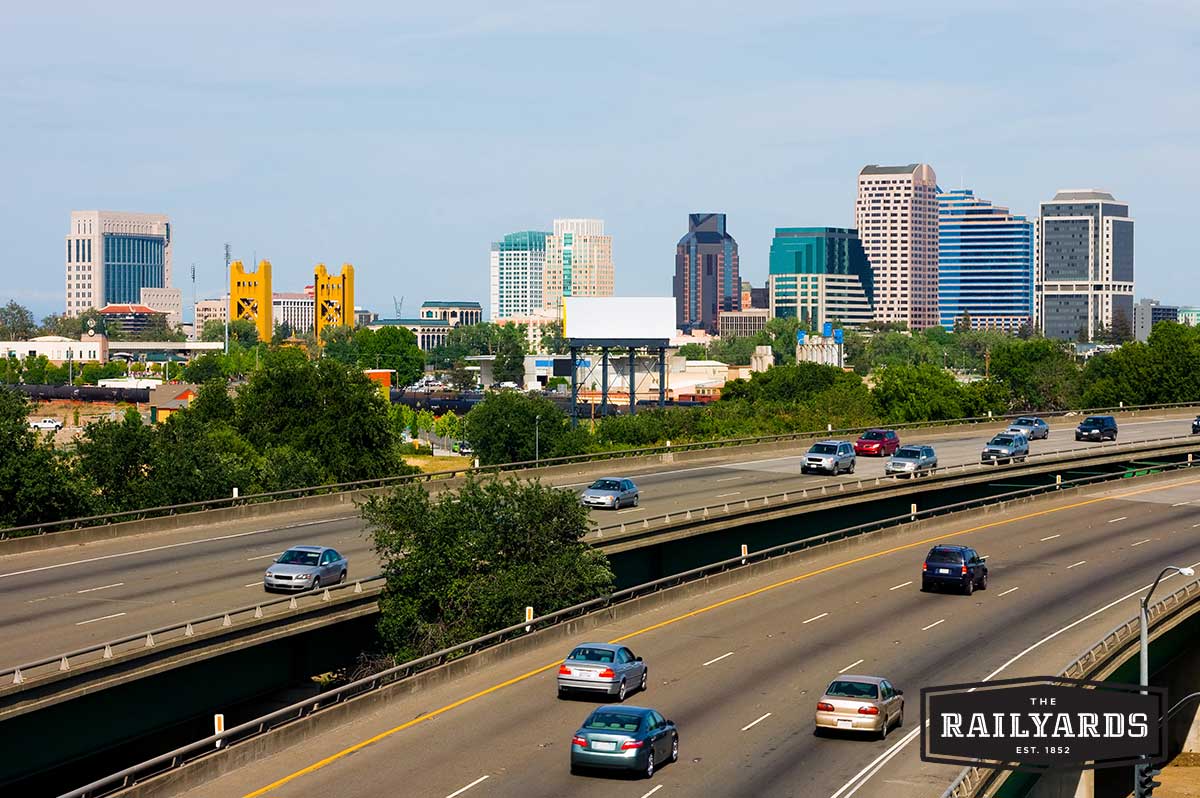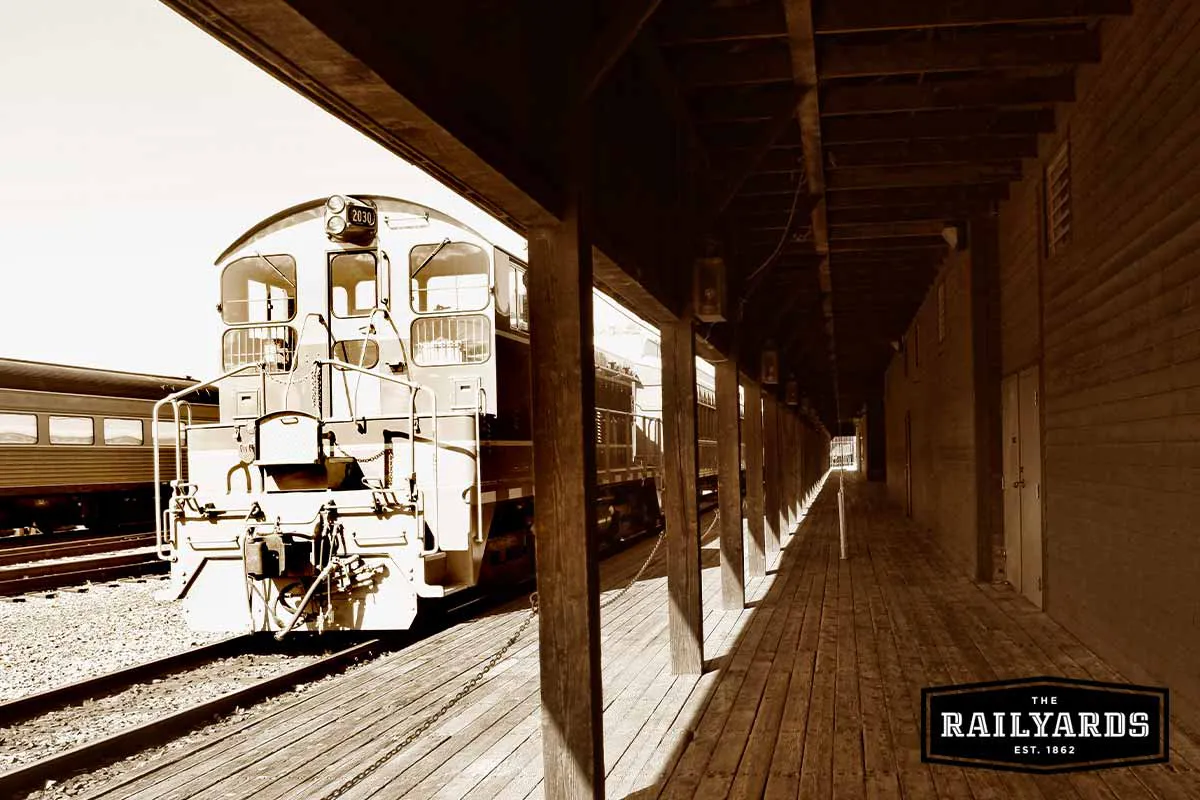
October 9, 2023 / Author: the Railyards
Can you choo-choose the right answer to this train trivia? Conduct a test of your knowledge below!
Railroads have been a part of our nation and world for a long time, facilitating trade, travel, and tales of adventure. While many of us are familiar with the general history of trains, there’s much more to explore, along with some fun trivia to go along with it. Accompany us and uncover those lesser-known facts, plus learn a little about the Sacramento Railyards and the influential Southern Pacific Railroad while you’re at it. Join us as we delve into the railroads, shedding light on the innovations, challenges, and stories that have shaped our tracks.
Sacramento’s Southern Railroad
Start with the station that started it all! Test your skills and see how much you know about one of the nation’s largest railroad companies.
Question #1
In the 1950s and 1960s, which fruit was the main commodity hauled on the Sacramento Southern Railroad?
Answer: Bartlett pears
Fun Fact: The Sacramento Southern Railroad was primarily used to transport pears, asparagus, celery, seeds, and many more fruits and vegetables nationwide
Question #2:
How many cars were dedicated EACH night to carry beets during the height of their season?
Answer: Over 100 cars!
Fun fact: Train crews would often pick fresh asparagus for dinner that grew along the way to their destinations
Question #3:
In 1971, this common Sacramento incident occurred, destroying most of the railroad and making the line impassable; what was it?
Answer: A flood!
Fun fact: Since the line had become unusable for customers and shipping was still in dire need, most companies turned to trucking
Question #4:
What year did the Southern Pacific pack up their last freight cars?
Answer: 1978
Fun fact: As rail traffic continued to decline, service to Hood, CA was reduced to a thrice-weekly local freight; eventually, Southern Pacific abandoned all but the last three miles on the Sacramento end.
Question #5:
What year did the California State Railroad Museum open?
Answer: 1981
Fun Fact: To celebrate the new facility’s anniversaries in 1982 and 1983, the first commemorative excursion trains operated on the Sacramento
Southern Railroad to the delight of passengers.
Question #6:
The Sacramento Railroad has many fun stops, but one building is the oldest of its kind, west of the Mississippi, what is it?
Answer: The Crocker Art Museum!
Fun Fact: Completed in 1872, the gallery building included a bowling alley, skating rink, and billiards room on the ground floor; a natural history museum and a library on the first floor; and gallery space on the second floor.
Question #7:
How many riders does the Sacramento Southern Railroad still attract annually?
Answer: About 80,000 riders!
Fun fact: You can still delight in the sights, smells, and sounds of an authentic, working locomotive as it rolls along the levees of the Sacramento River for a six-mile, 45-minute round-trip excursion
Question #8:
In 2016, the Museum and Foundation for the Railroad recognized what achievement?
Answer: Their two millionth train ride guest.
Question #9:
A special plaque on the Corner of Front and K Streets marks the very spot of this event on January 8th, 1863; what event is it?
Answer: Where CA Governor Leland Stanford broke ground, marking the western leg of the Transcontinental Railroad
Fun fact: Stanford was president of the Southern Pacific Company from 1885 until 1890, when he was forced out of that post (as well as the presidency of the Southern Pacific Railroad) by Collis Huntington, the company’s ranking vice president and the corporate directorate. That was thought to be retaliation for Stanford’s election to the US Senate in 1885 over Huntington’s friend, Aaron A. Sargent.
Question #10:
In the 1970s, the Southern Pacific Railroad also founded a telecommunications network with a state-of-the-art microwave and fiber optic backbone that led to the founding of what company?
Answer: Sprint!
Fun fact: This telecommunications network company name came from the acronym for Southern Pacific Railroad Internal Networking Telephony.
Freight Trains
Freight trains were Sacramento Southern Railroad’s main money maker. Do you know these freight train facts? Test your knowledge below!
Question #1
The first freight cars were made and used (on railroads) about what year?
Answer: 1825
Fun fact: The Granite Railroad in Quincy, MA, employed primitive 4-wheel flatcars to carry granite slabs between a quarry and the river transport system.
Question #2
What was the first major addition to freight-car construction?
Answer: Sprung wheels
Fun fact: The very first freight cars were flatcars (think of a flatbed truck). Because of their small size, iron frames were not needed until cars started getting much bigger. Round wheels are a given in any freight car, and bogie trucks (similar to multi axel vehicles) didn’t happen until train cars started getting bigger. But car builders realized very early on that they needed some kind of cushioning to protect the cargo and lengthen the car’s life, and -poof- sprung cars with suspension appeared!
Question #3
What feature of later American freight cars was something never seen before on British freight cars?
Answer: Enclosed freight cars
Fun Fact: Enclosing freight cars had to do with the American climate and the locomotives we used. Vicious summer heat, icy cold winters, baking deserts, and lots of rain are not good for freight, which was also exposed to flaming cinders pouring from the locomotive. Something had to be done: the enclosed freight car.
Question #4
True or False: Freight cars were originally constructed from iron, but they changed it to wood when they discovered it was cheaper.
Answer: False
Fun Fact: Freight cars were initially made from wood, then wood with iron frames, then steel. Certain parts of the car have always been made from iron, though: the couplers and the wheels.
Question #5
What is the average length of a modern boxcar?
Answer: 50 feet
Fun fact: The boxcar, often called the jack-of-all-trades freight car because of its widespread use hauling every good imaginable, is often about 40-50 feet long. Stockcars, when they were in widespread use, were about 30 feet long. Certain boxcars, known as hi-cube boxcars because of their high cubic foot capacity, can be as long as 93 feet from coupler to coupler.
Question #6
What do the letters ‘LT.WT.' on a car mean?
Answer: Lightweight
Fun fact: Reporting marks tell dispatchers what kind of car it is, who owns it, etc. LT.WT. indicates the car is lightweight. This is the car’s weight when it is unloaded.
Question #7
True or False: A Plate C notation indicates that a car is too big for some services.
Answer: True
Fun fact: A plate C notation (EXCEEDS PLATE C) is applied when a freight car is too big to clear certain bridges, tunnels, etc., and therefore is restricted from some services.
Question #8
The mark ‘TA' on a freight car indicates what?
Answer: General Service Tankcar
Fun fact: There were many different types of tank cars, each one dedicated to carrying different products. Some of them included Vinegar cars, pickle cars, and milk cars!
Question #9
Buckeye-style freight car trucks are notable for what feature?
Answer: 6 wheels
Fun fact: Buckeye trucks are equipped with six wheels, making them perfect for cars that carry very heavy loads. A flatcar with two sets of Buckeye trucks contains four more wheels than a normal freight car, which has eight wheels.
Question #10
The average freight car earns about how many dollars a month for the operating company?
Answer: $600
Fun fact: It costs less for trucking companies to send their trailers by train than by truck.
Hankering for more trivia questions and fun facts? Check out our blog on these 8 Bucket List Railroads to Visit for Any History Buff. Or if you’re looking for excursions near you, you can also check out our 5 Enchanting Train Journeys in Northern California.


